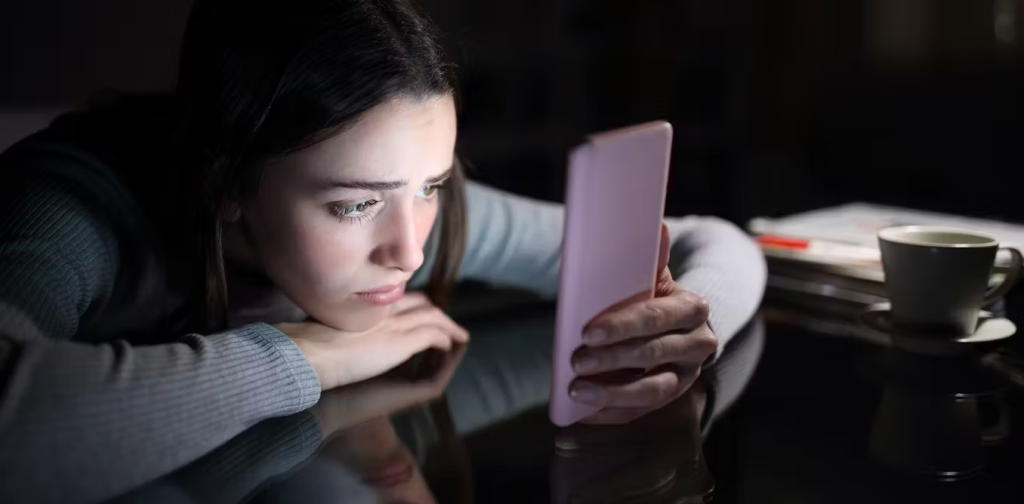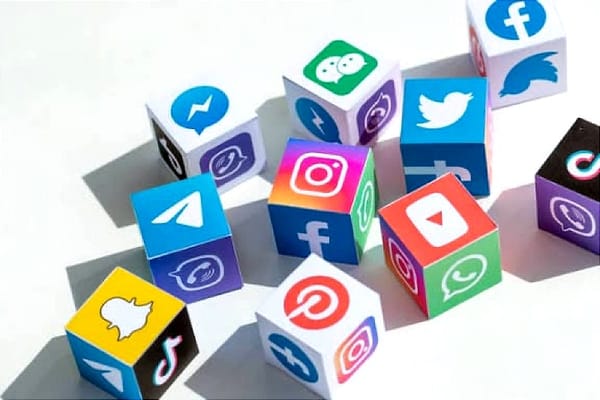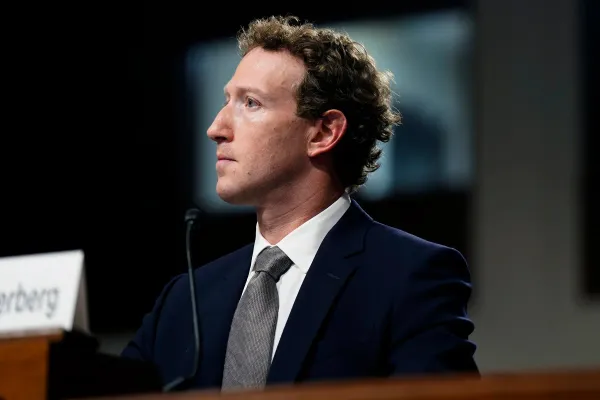The moral panic over social media and teen depression

Over the past few years, it 's been hard to avoid the conclusion that smartphones, and in particular the use of social media such as Instagram and TikTok, have caused an epidemic of mental health and body image problems among young people, and in particular teenaged girls — problems that in some cases have led to suicide. A recent piece in The New Yorker is just the latest in a long line of such reports: in it, writer Andrew Solomon interviews distraught parents and relatives of a number of young people who have killed themselves, and in every case the culprit seems to be their excessive use of smartphones and specifically their use of social media, which many of those involved seem to believe caused or exacerbated their childrens' anxiety and depression.
One of the girls who died by suicide spent all her time on Instagram and was convinced she was ugly and no one would ever love her, and it turned out that her feed was full of people talking about eating disorders and suicide. Her mother says that after reading about Frances Haugen, a whistleblower who leaked thousands of internal Facebook documents about the harms of social media, she became convinced that Instagram played a role in her daughter's death, and decided to sue Meta. The article goes on to talk about rise in the rate of deaths by suicide between age 10 and age 24 in the US since 2007, and the fact that 53 percent of Americans believe that social media is responsible. And it talks about how social media produces a dopamine effect similar to nicotine or cocaine, and explains that this is why some people get addicted to using social media.
Before I go any further, there's no question that the stories in the New Yorker piece are heart-wrenching. Solomon writes about visiting the childhood bedrooms of boys and girls in their teens or early twenties who struggled with anxiety and depression and in the end chose to kill themselves, and their parents tell him about the guilt they feel over things they could have done. Only a robot would be able to listen to those stories and not feel for those parents and those families, and I am not trying to downplay or minimize that. But after pages and pages of these stories — more than three quarters of the way through the article — comes what I think is an important point, when Solomon writes that "research has failed to demonstrate any definite causal link" between smartphone or social-media use and depression.
That's not because researchers aren't looking for such a causal link, because they definitely are, and have been for some time. But despite all of the studies, there is still an almost complete lack of any evidence that social media use causes anxiety or depression in young adults. So why do so many people believe it does? Because news articles keep telling them so. “Smartphones and social media are destroying children’s mental health,” the Financial Times wrote last spring, while the Guardian described the smartphone as “a pocket full of poison.” Many of these articles are based on books such as The Anxious Generation, by Jonathan Haidt, a psychologist at the Stern School of Business. Haidt talks about how smartphone use and social media have caused an epidemic of anxiety among young people, and provides a raft of research that he says proves this.
Note: In case you are a first-time reader, or you forgot that you signed up for this newsletter, this is The Torment Nexus. You can find out more about me and this newsletter in this post. This newsletter survives solely on your contributions, so please sign up for a paying subscription or visit my Patreon, which you can find here. I also publish a daily email newsletter of odd or interesting links called When The Going Gets Weird, which is here.
But does he prove his case? Not really, according to a number of other social scientists. Candice Odgers, a psychology professor at UC Irvine, wrote in Nature that Haidt's suggestion that digital technologies are causing an epidemic of mental illness "is not supported by science," adding "hundreds of researchers, myself included, have searched for the kind of large effects suggested by Haidt" and found plenty of correlation but very little in the way of causation. Andrew Przybylski, a professor of human behavior and technology at the University of Oxford, told Platformer that “extraordinary claims require extraordinary evidence [and] right now, I’d argue he doesn’t have that.” (Haidt has responded to his critics by arguing that some of the studies he refers to do show causation.)

Indistinguishable from zero
Haidt often cites research by Jean Twenge, a psychologist at San Diego State, to support his claims of a causal link between smartphone use and anxiety in teens. But in a study published in Nature, Przybylski tried to reproduce some of her findings and was unable to show more than a mild correlation. In fact, he told Platformer, the average correlation between screen time and well-being "was analogous to the correlation between wearing glasses and well being," and therefore might just be a rounding error or statistical anomaly. The impact of smartphone use appears to be more or less the same as the impact of eating potatoes on a regular basis.
A meta-analysis of 226 studies in 2022 involving more than a quarter of a million participants found that the association between social media and feelings of well-being was "indistinguishable from zero." Hardly the kind of smoking gun evidence implied by Jonathan Haidt's books and magazine articles.
In one paper, Twenge found that teens who spend a lot of time on their phones were two times more likely to suffer from depression (a rate of 7 percent versus the 3.5 percent rate for non-excessive users.) Odgers pointed out in her Nature piece that the data "suggests not that social-media use predicts or causes depression, but that young people who already have mental-health problems use such platforms more often or in different ways from their healthy peers.” And in a study of teens that was done in 2021, close to 45 percent of respondents said that using social media usually makes them feel better, not worse.
The pressure to make smartphones and/or social media the culprit stems in part from the urgency of the alleged epidemic of mental health problems in young people. But even that gets somewhat murky the closer one looks. It's true that adolescent suicide rates have risen in the US in recent years. But Christopher Ferguson, a psychologist at Stetson University, has pointed out that the increase in suicide rates is not specific to teens; suicide has increased in almost every age group in the US. But there hasn't been an increase in teen suicides in other countries, which presumably also have smartphones and social media. According to World Health Organization data, between 2012 and 2019 the suicide rate across Europe as a whole fell by 26 percent.

Moral panic
Ferguson and others are convinced that the fears about social media use and anxiety, depression and suicide are a classic moral panic, and I tend to agree. “There’s nothing here that isn’t present in any of the past panics about video games, Dungeons & Dragons, or silent movies,” Przybylski told Vox. “Each of these, you have a new technology, a vulnerable group and a new mechanism. It’s always ‘This time it’s different,’ but there’s nothing in these claims that actually distinguishes it in terms of scientific evidence.” Ferguson wrote that one of the features of moral panics is "advocates for the panic claim that research consistently supports the panic when in fact it does not."
In Wired, veteran tech writer Steven Levy remembered another similar type of panic: "Almost 30 years ago, as the internet was finding its way into our lives, the media started writing stories about internet addiction," he writes. "Like Jonathan Haidt’s current campaign against social media, it put a scientific sheen on some actual problem exacerbated by technology, while deemphasizing the value people extracted from online activity.” A US Centers for Disease Control study, Levy says, found that during the pandemic there was a rise in mental health issues among teens, including suicide. But it also found that social media could sometimes mitigate those problems — young people who felt more connected had better mental health, the study found.
Taylor Lorenz, a former Washington Post reporter who covers social media and just launched a newsletter called User Mag, told Levy that Haidt’s arguments are toxic. “It’s harmful because, as so many LGBTQ+ groups and others have made it very clear, social media is a lifeline for millions and millions of people,” she said on Twitter. “And the notion that screen time is inherently bad is also a regressive idea. The same arguments that he uses are the ones that people once used for banning comic books, the radio, and all new forms of media.” As Odgers said in her Nature review of Haidt's book, even if we accept that there is a generation that needs help with their mental health, it doesn't do them any good to "tell stories that are unsupported by research."
Got any thoughts or comments? Feel free to either leave them here, or post them on Substack or on my website, or you can also reach me on Twitter, Threads, BlueSky or Mastodon. And thanks for being a reader.



